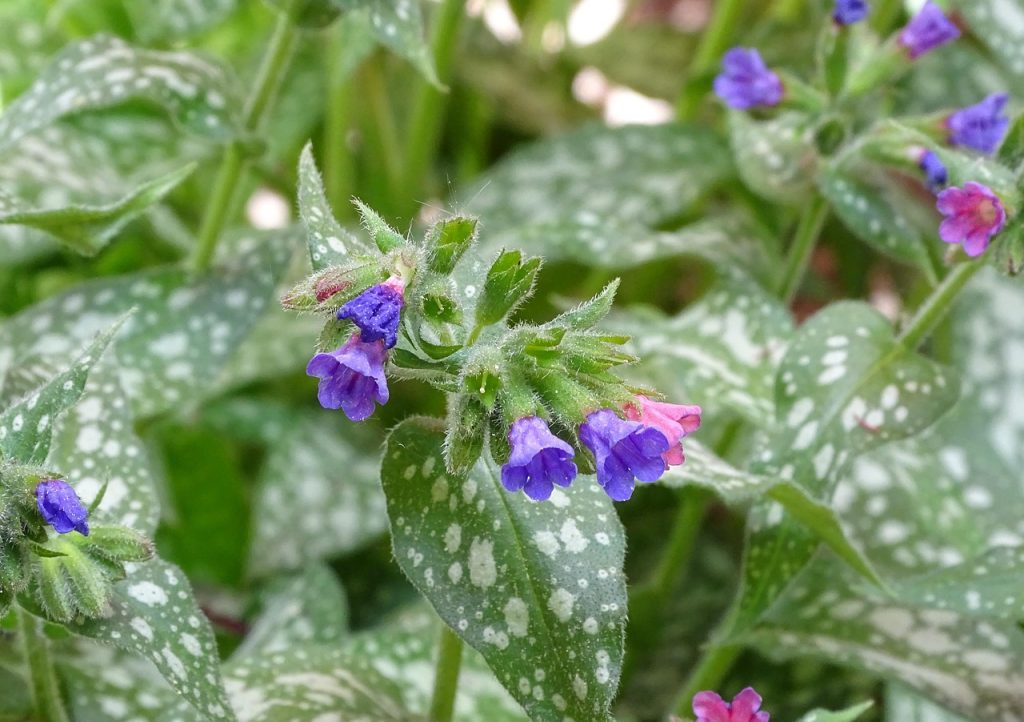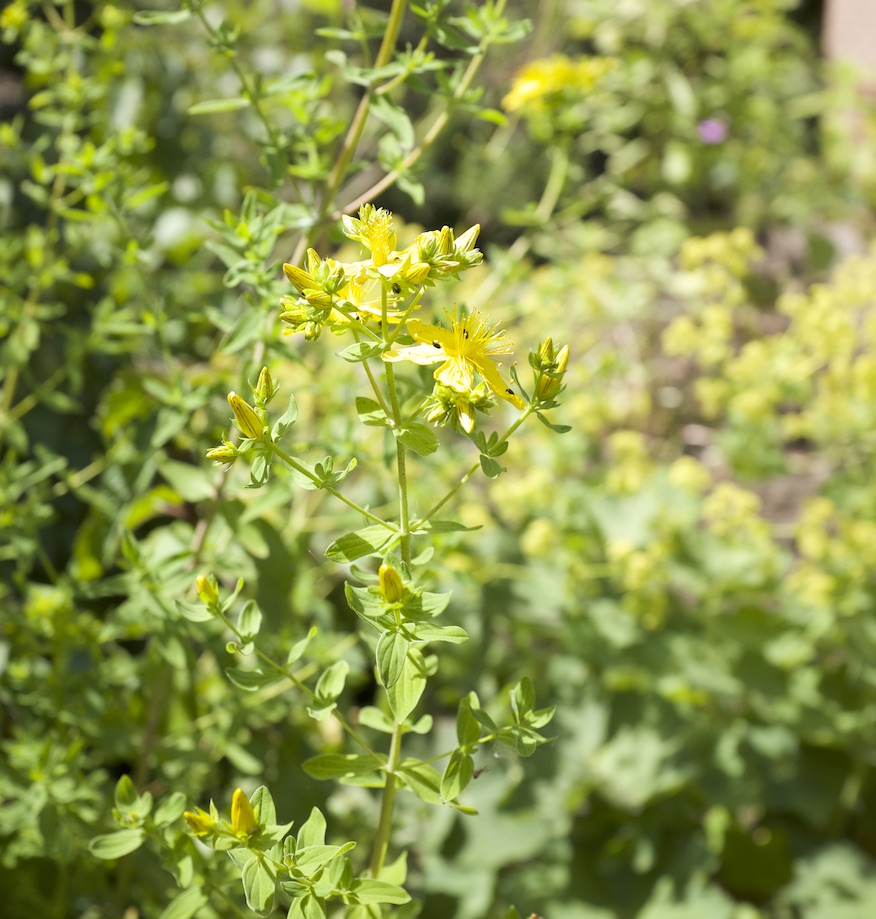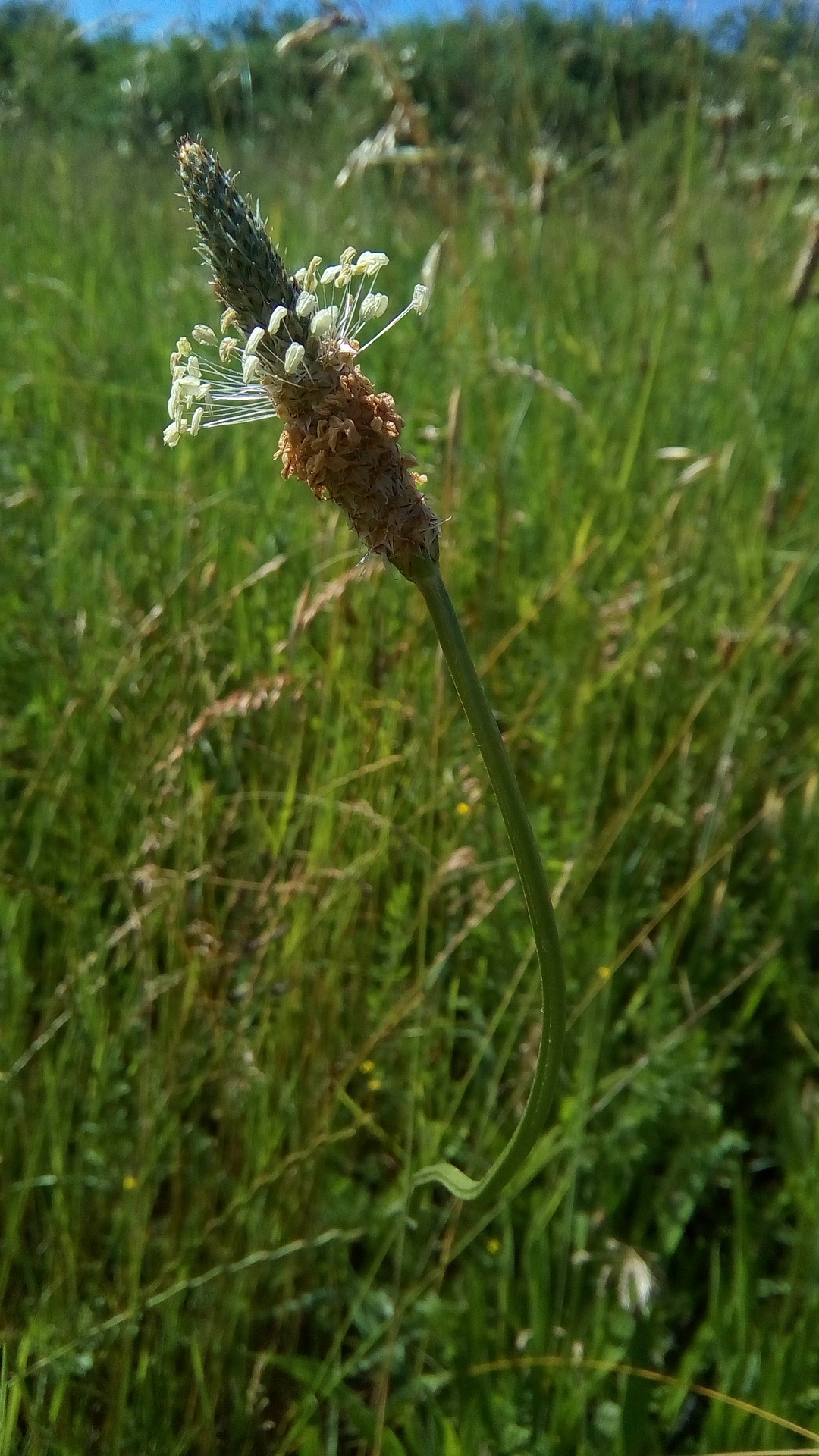Anyone who’s been on a herb walk with us will know how excited we get about worts!
A ‘wort’ is simply an old term for a plant, typically a purposeful plant. At Cotswold Herb Centre we define herbs as ‘purposeful plants’ so its worts and all for us!
In particular, though, we love the plants which have a common name that includes the term ‘wort’. As common names are what those living near and with the plants typically called them, they are a great indicator of the regard with which a plant was held.
When the term ‘wort’ appears in the common name, we’re keen to know what it’s attached to, as this often tells us the main use that ‘wort’ has been put to in the past.

Useful names
Living in and among plants, people would typically have had no need for the Latin names of their familiars. Instead they would know the plant that’s good for ‘this’, or the plant they use for ‘that’.
So we inherit names like liverwort, nipplewort or lungwort – it’s quite easy to guess which part of the body these plants were each thought to help.
Helpful names
Sometimes, it’s the habitat that the wort is identified by. Its name would be a big help if you’re trying to find the plant. Where would you go to look for sandwort, for instance?
Sometimes you’ll get function and location combined, especially if there are alternative plants for doing the same job. So, for example, we have marsh woundwort and hedge woundwort (actually, there are quite a few different woundworts).
Topical names
Some worts are indicators of the time of year you might expect to find the plant at its best – when it blooms or when its medicine is most potent. An example is one of our favourites, found abundantly locally – St John’s Wort. Named because it comes into flower typically on the feast day of St John (24th June), and this is still the traditional day to collect its starry yellow flowers to make your own divinely red SJW infused oil.

Multiple names
It can sometimes be confusing to have so many different names for the same plant. Most will at least have their latin name and a common name, some will have a string of common names and many regional variations. Often the number of names may be an indicator of how prevalent the plant is, or how prominent in people’s lives.
These can provide a fascinating insight into the plant. Just as knowing the latin name (species and family) for the plant can tell you so much about its needs, preferences and likely benefits; knowing the common names for plants reveals an archive of previous uses and associations.

History
The term ‘wort’ is from the Old English wyrt, meaning root, herb or plant. This in turn is thought to have come from the Germanic term wurtiz (which is found in modern German as wurzel, meaning ‘root’ – and you thought Wurzel was a scarecrow, didn’t you!). Though use of the term on its own was dwindling by the 17th Century, it lives on today in combination though our common plant names.
Wortcunning
Another term that has fallen out of use (sadly) is the idea of ‘wortcunning’. This simply means doing cunning things with plants. Finding uses for the plants that grow around us. Which brings us back to our ‘Purposeful Plants’.
Plants are our most readily accessible, natural, local resources. They were critical to functioning, not just as food, but for tools, shelter, fuel, medicine, self-care and ceremony.
In these days when it’s so easy to pop to the supermarket or click for an Amazon delivery, we forget how much was once done just with the resources we had to hand.
Celebrating Worts
To raise awareness of these purposeful plants, and to celebrate their everyday helpful presence all around us, we will be posting a ‘Wort of the Week’ on Instagram and Facebook.
Do hop on and follow us to enjoy a wry little look each week at these plants and their stories.

Instagram – CotswoldHerbCentre

Facebook – Cotswold Herb Centre

Leave a Reply